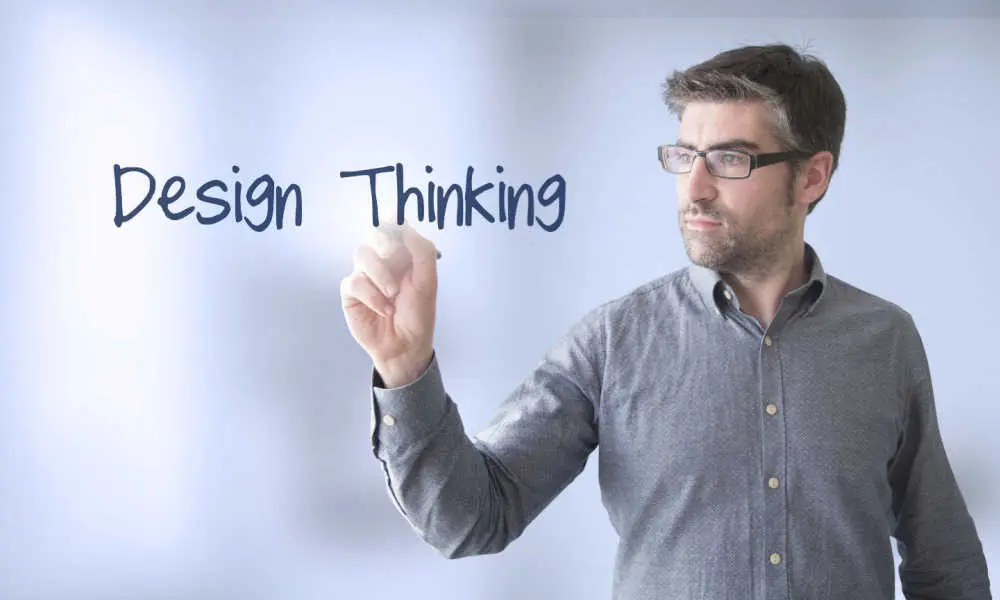Understanding design thinking is a critical component in successful product development and management. Design thinking puts people first, helping product managers and teams incorporate the end user’s needs throughout the product development cycle.
Many well-known tech companies, including Google and Apple, use design thinking. However, the concepts involved with design thinking are used across many industries. The process helps innovators find creative solutions to challenges in engineering, literature, science, art, music, and business. It’s also become an influential trend in product management.
A quality master in product management degree or certificate program includes a thorough examination of design thinking for product development and lifecycle management.
What Is Design Thinking?
What is design thinking? At its core, design thinking refers to human-centered, innovative solutions to product challenges by meeting users’ and stakeholders’ needs within the current limitations of what is technologically feasible and economically viable. It’s a guiding methodology for many successful organizations, from tech companies to automobile manufacturers.
Stanford University professor Tim Brown created design thinking to develop a more human-centered, empathetic approach to product design. In originating design thinking, he drew on past successful ideas, including the work of Thomas Edison, who Brown credited for giving “great consideration to users’ needs and preferences.
Brown popularized design thinking in a 2008 Harvard Business Review article. He noted that Edison created the electric lightbulb “and wrapped an entire industry around it. Edison’s genius lay in his ability to conceive of a fully developed marketplace, not simply a discrete device,” Brown says. He was able to envision how people would want to use what he made, and he engineered toward that insight.”
Design thinking is now a method used worldwide. In addition to taking a more empathetic approach to design, Brown’s ideas placed design thinking at the forefront of product development rather than as a downstream step in the process.
The Phases of Design Thinking
Design thinking typically takes place in five stages.
Emphasize. In this stage, teams focus on understanding the desires and the incentives end users have for a product beyond the basic need for what it accomplishes. This requires deep research into customer data and engaging with customers through focus groups, social media, and individually. It requires understanding what customers feel, say, and hear from others, as well as their fears and aspirations.
Define. This stage involves evaluating the information gained in the first stage and extracting insights into opportunities where product developers can generate value for customers.
Ideate. Teams develop solutions to meet customer needs in this stage, brainstorming ideas. The more alternatives developed, the better.
Prototype. Here is where ideas become a reality. Taking ideas from the ideation stage, engineers create demos that teams and customers can experiment with and provide feedback on, leading to changes and improvements.
Testing. Teams evaluate the feedback given from experimentation with prototypes. In this stage, teams can identify successes, failures, areas that need improvement, and good features that must be retained through every product iteration.
Merrimack College’s MS in Product Management Degree
In the MS in Product Management degree program from Merrimack College, students learn about design thinking in detail. They also advance their careers through an industry-aligned curriculum focusing on product, technical, and marketing management skills.
The 100% online program offers core classes split into three areas: business, data science and analytics, and engineering management. Graduate students can choose from three concentrations offered through the program: Life Sciences; Software, Web, and Mobile; and Complex Technological Products.
Merrimack College also offers graduate certificate programs that help professionals start their product management careers. The three certificate tracks are Life Sciences Foundation Certificate; Software, Web, and Mobile Foundations Certificate; and Complex Technological Products Foundations Certificate. Graduate-level credits are transferable, and some credits can apply toward earning a master’s degree.
